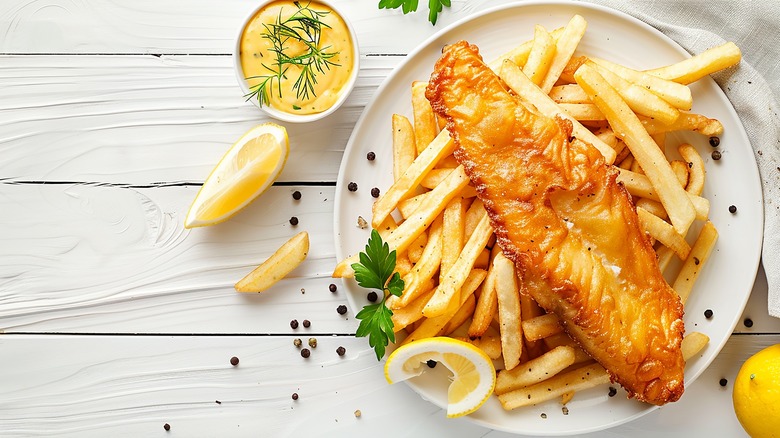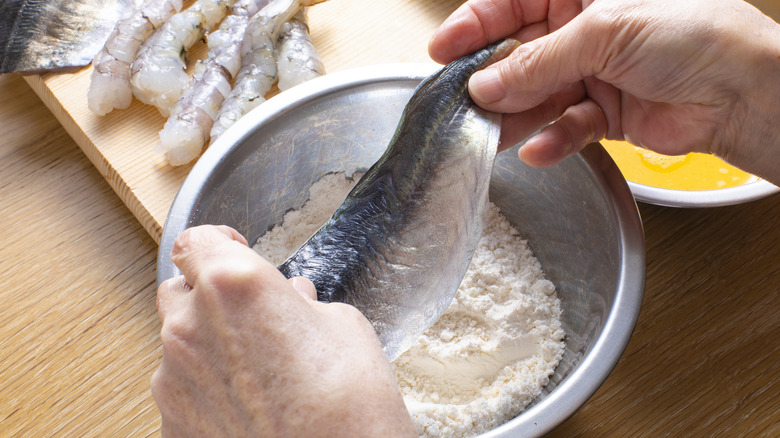Mistakes You're Making With Batter-Fried Fish (And How To Avoid Them)
When fish is cooked right, it's delicious, but when it's done wrong, it's enough to turn someone away from fish for a long time. That doesn't happen with all foods — even a less-than-stellar pizza is still decent. Fish, however, is a little more particular. Fortunately, there are a ton of tips and tricks to make your fried fish a pub-worthy meal. But if you don't get your batter right, none of them will matter much.
To get some professional insight into some of the biggest mistakes many make with their batter, Daily Meal reached out to Kory Foltz, the executive chef at Sunseeker Resort. He gave invaluable advice to avoid the simple mistakes that turn your batter from light and crispy into a tough, bland mess.
"Using the wrong flour can make a batter thick and dense," Foltz explains. You might have a list of go-to swaps and substitutions for baking and cooking, but battered and fried fish is less forgiving. "Always use the right ingredients," he says. "Not seasoning the batter can leave the fish bland and doesn't enhance the flavor of the fish. Mixing too much can develop more gluten in the batter, resulting in a tougher and less crispy crust. Lastly, if the batter is too thin, it won't adhere to the fish properly and will not coat it correctly." That's quite the checklist! Fortunately, Foltz also has tips to ensure it all comes together.
Mixing the perfect batter is a delicate balance
To end up with that perfectly crispy batter, Chef Kory Foltz says there are a few things you should remember. He advises using all-purpose flour and a little cornstarch. Why cornstarch? It helps your batter stick to the fish, and that's incredibly important: Even the tastiest fried fish is better when you can easily get a bite of both the breading and the flaky fish.
Foltz also says to stop mixing your batter when everything is combined. It should be thick, but it doesn't have to be perfect. If there are a few lumps, don't keep mixing to try to get rid of them all. Instead, set the batter aside to rest. We're not just talking about a few minutes here: Some of the places that serve the best fish and chips will let the batter rest for at least an hour, sometimes several. The result will be the crispiest batter that's ever come out of your kitchen, and it's worth the wait for that perfect plate of fish and chips (maybe with fried pickles).
Finally, prep your fish before battering it. According to Foltz, "[The] best thing to do before battering your fish is to ensure it is as dry as possible. Season it on all sides, and then go into your flour, then batter. If the fish is dry, the flour evenly coats all sides, allowing the batter to evenly cover all areas for a great fry."

